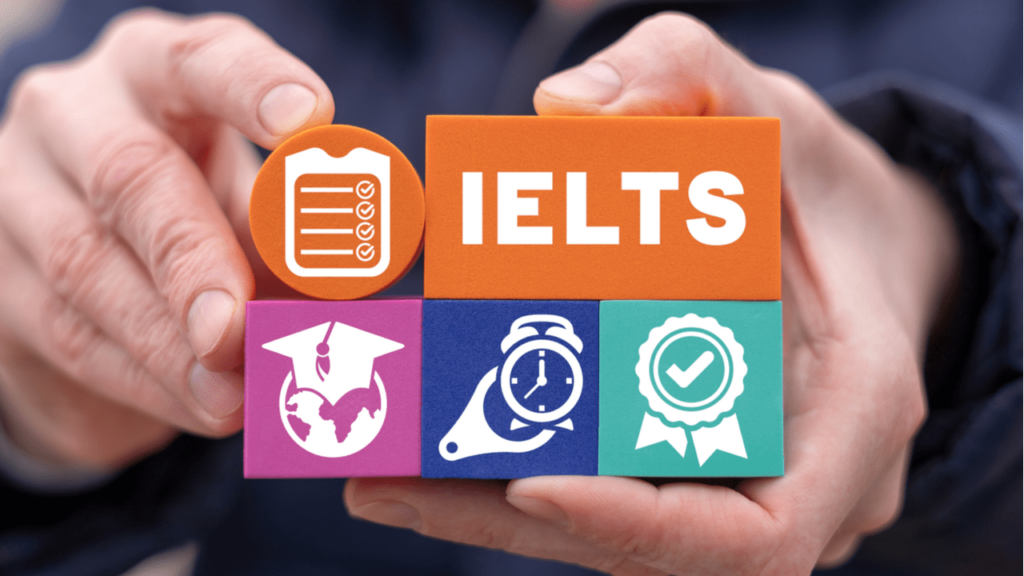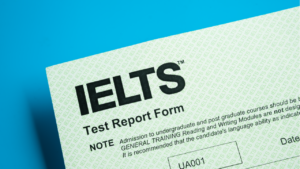Are you preparing for the IELTS Reading test in 2023 and looking for the best practice materials? We have compiled the top answers for Coconut Palm Reading, one of the common topics in the IELTS Reading section.
Coconut Palm Reading is a fascinating topic that involves the interpretation of various signs and symbols on coconut palms.
Understanding this topic can help you improve your reading skills and prepare for the test.
In this blog post, we will provide you with the best answers for Coconut Palm Reading that will help you sharpen your IELTS Reading abilities and increase your chances of achieving your desired score.
So, let’s dive in and discover the secrets of Coconut Palm Reading!
Coconut Palm Reading Passage: Question Types
The commonly asked questions related to the Coconut Palm Reading Passage are:
Crack IELTS Exam in first attempt
Attend Leap’s free masterclass to get tips, tricks and advance strategies to crack IELTS exam in first attempt

Matching Headings
It is a very straightforward question type in the Coconut Palm IELTS Reading that requires you to match a set of headings to paragraphs in the reading passage.
How to Answer?
Crack IELTS Exam in first attempt

Attend Leap’s free masterclass to get tips, tricks and advance strategies to crack IELTS exam in first attempt
First, read through all the headings and record their ideas in your mind.
Next, skim through the passage quickly, identify important keywords and paraphrase them.
Now read each paragraph carefully. Look at the headings and try to find the one that best matches the keywords.
Locate the answer and ensure that the heading conveys the main idea of the paragraph.
Short Answer Questions
Short Answer Questions are regarded as the simplest to answer. It’s about getting the right information from the text.
You must study a particular text and provide a one to three-word response to a series of questions.
How to Answer?
Read the questions very carefully and try to find the keywords. Think about synonyms or paraphrases for these keywords.
Then, skim-read the text, but don’t read it in detail.
Now read the first lines of each paragraph to get the main idea. Go back and re-read the question. With the help of keywords, scan the paragraphs in detail to find the exact answers.
True/False/Not Given Questions
True/ False/ Not Given questions test your capacity to analyse the writer’s viewpoint, opinion or attitude.
The more you practice TFNG questions, the better your performance will be.
Make sure to use a variety of IELTS Reading materials to improve your skills, and try to time yourself to simulate the test conditions.
How to Answer?
The first task is to skim through the passage quickly to get a general idea of the content. Don’t try to read every word at this stage, just focus on understanding the main ideas and key points.
Now read the statements carefully. Identify the keywords in the statement that are relevant to the passage.
With the help of keywords, look for the relevant information in the passage that relates to the statement.
Once you have found the relevant information, decide if the statement is true, false or not given according to the information in the passage.
Make sure that you have correctly interpreted the statement, supported by the information in the passage.

Coconut Palm Reading Passage
One of the important passages is the coconut palm IELTS, and the passage is given below:
Paragraph I
For millennia, the coconut has been central to the lives of Polynesian and Asian peoples. In the Western world, on the other hand, coconuts have always been exotic and unusual, sometimes rare. The Italian merchant traveller Marco Polo saw coconuts in South Asia in the late 13th century. Among the mid-14th-century travel writings of Sir John Mandeville, there is mention of ‘Great Notes of Ynde’ (great Nuts of India). Today, images of palm-fringed tropical beaches are clichés in the West to sell holidays, chocolate bars, fizzy drinks, and romance.
Paragraph II
The coconut palm has a smooth, slender, grey trunk, up to 30 metres tall. This is an important source of timber for building houses and is increasingly being used as a replacement for endangered hardwoods in the furniture construction industry. The trunk is surmounted by a rosette of leaves, each of which may be up to six metres long.
The leaves have hard veins in their centres which, in many parts of the world, are used as brushes after the green part of the leaf has been stripped away. Immature coconut flowers are tightly clustered among the leaves at the top of the trunk. The flower stems may be tapped for their sap to produce a drink, and the sap can also be reduced by boiling to produce a type of sugar used for cooking.
Also Read: Cambridge Book Listening Test 4 Answers
Paragraph III
Coconut palms produce as many as seventy fruits per year, weighing more than a kilogram each. The wall of the fruit has three layers: a waterproof outer layer, a fibrous middle layer and a hard inner layer. The thick fibrous middle layer produces coconut fibre, ‘coir’, which has numerous uses and is particularly important in manufacturing ropes.
The woody innermost layer, the shell, with its three prominent ‘eyes’, surrounds the seed. An important product obtained from the shell is charcoal, widely used in various industries and the home as a cooking fuel. The shells are also used as bowls in many parts of Asia when broken in half.
Paragraph IV
The nutrients (endosperm) of the developing seed needs are inside the shell. Initially, the endosperm was a sweetish liquid, coconut water, enjoyed as a drink but also provided the hormones that encourage other plants to grow more rapidly and produce higher yields.
As the fruit matures, the coconut water solidifies to form the brilliant white, fat-rich, edible flesh or meat. Dried coconut flesh, ‘copra’, is made into coconut oil and coconut milk, which are widely used in cooking in different parts of the world and in cosmetics. A derivative of coconut fat, glycerine, acquired strategic importance in a quite different sphere, as Alfred Nobel introduced the world to his nitroglycerine-based invention: dynamite.
Paragraph V
Their biology would appear to make coconuts the great maritime voyagers and coastal colonisers of the plant world. The large, energy-rich fruits can float in water and tolerate salt but cannot remain viable indefinitely; studies suggest they can no longer germinate after about 110 days at sea. Cast onto desert island shores, with little more than sand to grow in and exposed to the full glare of the tropical sun, coconut seeds can germinate and root.
The air pocket in the seed, created as the endosperm solidifies, protects the embryo. In addition, the fibrous fruit wall that helped it to float during the voyage stores moisture that the roots of the coconut seedling can take up as it starts to grow.
Paragraph VI
There have been centuries of academic debate over the origins of the coconut. There were no coconut palms in West Africa, the Caribbean or the east coast of the Americans before the voyages of the European explorers Vasco da Gama and Columbus in the late 15th and early 16th centuries. 16th-century trade and human migration patterns reveal that Arab traders and European sailors will likely have moved coconuts from South and Southeast Asia to Africa and then across the Atlantic to America’s east coast.
But the origin of coconuts discovered along the west coast of America by 16th-century sailors has been the subject of centuries of discussion. Two opposing origins have been proposed: they came from Asia or were native to America. Both suggestions have problems. In Asia, there is much coconut diversity and evidence of millennia of human use – but no relatives are growing in the wild. There are close coconut relatives in America, but no evidence that coconuts are indigenous. These problems have led to the intriguing suggestion that coconuts originated on coral islands in the Pacific and were dispersed from there.
Questions from Coconut Palm Passage
The questions that appear in this sample set are the type of questions candidates can expect from the IELTS reading exam. Questions related to this passage are:
Questions 1 – 8
(Completing notes with ONE WORD ONLY)
1: timber for houses and the making of ______
2. stems provide sap, used as a drink or a source of _________
3. used for __________ etc.
4. a source of ________
5. (when halved) for _________
6. a source of _______ for other plants.
7. oil and milk for cooking and ________
8. glycerine (an ingredient in ________ )
Questions 9 -13
(TRUE/FALSE/NOT GIVEN)
9. Coconut seeds need shade in order to germinate.
10. Coconuts were probably transported to Asia from America in the 16th century.
11. Coconuts found on the west coast of America were a different type from those found on the east coast.
12. All the coconuts found in Asia are cultivated varieties.
13. Coconuts are cultivated in different ways in America and the Pacific.
Coconut Palm Reading Answers with Explanations
1. Furniture
Explanation: The coconut palm has a smooth, slender, grey trunk, up to 30 metres tall. This is an important source of timber for building houses and is increasingly being used as a replacement for endangered hardwoods in the furniture construction industry. (Sentences 1-3, Paragraph 2).
The lines say coconut tree trunks are used to make furniture and house timber.
2. Sugar
Explanation: Immature coconut flowers are tightly clustered among the leaves at the top of the trunk. The flower stems may be tapped for their sap to produce a drink, and the sap can also be reduced by boiling to produce a type of sugar used for cooking. (Sentences 5-6, Paragraph 2)
The lines say coconut flower sap can be used as sugar.
3. Ropes
Explanation: The thick fibrous middle layer produces coconut fibre, ‘coir’, which has numerous uses and is particularly important in manufacturing ropes. (Sentence 3, Paragraph 3)
The thick fibre of the coconut palm produces ‘coir,’ which is used to make ropes.
4. Charcoal
Explanation: The woody innermost layer, the shell, with its three prominent ‘eyes’, surrounds the seed. An important product obtained from the shell is charcoal, widely used in various industries and the home as a cooking fuel.(Sentences 4-5, Paragraph 3)
The lines state that charcoal is produced from coconut shells.
5. Bowls
Explanation: When broken in half, the shells are also used as bowls in many parts of Asia.(Sentence 6, Paragraph 3)
The author mentions that the shells are used as bowls when broken in half, particularly in many parts of Asia.
6. Hormones
Explanation: Initially, the endosperm is a sweetish liquid, coconut water, enjoyed as a drink but also provides the hormones that encourage other plants to grow more rapidly and produce higher yields. (Sentence 2, Paragraph 4)
The line states that coconut water is consumed as a beverage, and other plants also use its hormones to promote rapid growth.
7. Cosmetics
Explanation: Dried coconut flesh, ‘copra’, is made into coconut oil and coconut milk, which are widely used in cooking in different parts of the world and in cosmetics. (Sentence 4, Paragraph 4)
The line states that coconut flesh is used in cosmetics and cooking.
8. Dynamite
Explanation: A derivative of coconut fat, glycerine, acquired strategic importance in a quite different sphere, as Alfred Nobel introduced the world to this nitroglycerine-based invention: dynamite. (Sentence 5, Paragraph 4)
The line states that Dynamite’s primary explosive component is glycerine.
9. False
Explanation: Cast onto desert island shores, with little more than sand to grow in and exposed to the full glare of the tropical sun, coconut seeds can germinate and root. (Sentence 3, Paragraph 5)
Contrary to the statement, coconut seeds germinate without shade.
10. False
Explanation: There were no coconut palms in West Africa, in the late 15th and early 16th centuries. 16th-century trade and human migration patterns reveal that Arab traders and European sailors will likely have moved coconuts from South and Southeast Asia to Africa and then across the Atlantic to America’s east coast. (Sentences 1-2, Paragraph 6)
These lines state that the route for transporting coconuts in the 16th century was not directly from Asia to America but from Asia to Africa and then to America.
11. Not Given
Explanation: The paragraph does not compare local coconut varieties.
12. True
Explanation: In Asia, there is much coconut diversity and evidence of millennia of human use – but no relatives are growing in the wild. (Sentence 7, paragraph 6)
These lines suggest that Asia had no wild varieties, only cultivated ones.
13. Not Given
Explanation: The passage does not mention how coconuts are grown.
Expert Tips to improve your Coconut Palm Reading Answers
If you want to improve your Coconut Palm IELTS Reading score, here are some exclusive tips and strategies. Whether you’re a beginner or an experienced practitioner, these expert tips will help you take your reading score to the next level.
1. Use Skim and Scan Techniques to find answers
Skim through the passage to get a general idea of the content, then scan for specific information required to answer the different types of questions. Underline the keywords in the questions to help you identify the relevant parts of the passage.
2. Pay close attention to the questions
Before Reading the passage, read the questions carefully and highlight key phrases to focus on the relevant parts of the text that hold the answers. Remember to analyse the keywords in the different question types and track them in the passage to answer correctly.
3. Manage your time effectively
Allocate a certain amount of time for each passage and stick to it. Don’t spend too much time on one question if you’re unsure of the answer.
4. Expand your vocabulary
Learning new words and using them in context can help you understand the passage more easily and answer questions more accurately. Practise using context clues to guess the meaning of unfamiliar words.
5. Make educated guesses
Make an educated guess rather than leaving an answer blank. There is no negative marking, so taking a chance is better than missing out on potential points.
Also Read: IELTS Reading Score 7+: Preparation Strategy
Looking for professional coaching for IELTS?
LeapScholar’s tailor-made IELTS Courses can provide all the guidance you need. You’ll attend classes of India’s top IELTS trainers, attempt mock tests, get writing and speaking assessments evaluated and get access to comprehensive study materials.
Also, check out our IELTS app, which could assist you throughout your preparation journey!
Frequently Asked Questions
-
How can I increase my reading speed for the IELTS Reading test?
Practicing skim and scan techniques is a very good method to improve your reading speed.
-
What should be my approach while practising Coconut Palm Passage?
Read the passage thoroughly and try to understand the main idea and key points.
Concentrate on the specifics and keywords, such as the characteristics of the coconut palm, its uses, and its history. -
What skills does the IELTS Coconut Palm passage analyse?
The IELTS Coconut Palm passage assesses various Reading skills, such as comprehending specific details, identifying the writer’s purpose, recognising tone and attitude, and inferring the overall meaning.
-
How do the IELTS experts evaluate the Coconut Palm Reading Passage?
The accuracy of the responses, the relevance of the answers to the questions, and the use of appropriate grammar, vocabulary, and spelling are all factors considered by IELTS experts while evaluating the Coconut Palm Reading Passage.
-
What are some effective strategies for managing time during the IELTS Reading test?
Some effective strategies for managing time during the IELTS Reading test include focusing on the questions that carry more marks and avoiding spending much time on any one question.
-
What are some tips for choosing the correct answers in the IELTS Reading test?
To choose the correct answers, read the questions carefully, underline keywords, use context to eliminate wrong answers, and refer back to the text to confirm your choice.
-
How do you identify the central idea/theme in the IELTS Reading sections?
To identify the main idea of the IELTS Reading Passages, you should read the introduction and conclusion carefully.
The first or last sentence of a paragraph often contains the main idea. It is good practice to read these sentences carefully as it will save time.






